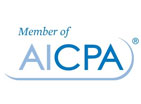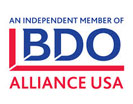As your company plans for the coming year, management should assess your strengths, weaknesses, opportunities, and threats. A SWOT analysis identifies what you’re doing right (and wrong) and what outside forces could impact performance in a positive (or negative) manner. A current assessment may be particularly insightful because market conditions have changed significantly during the year — and some changes may be permanent.
Aaron K. Waller, CPA
Recent Posts
The coming audit season might be much different than the seasons of yore. As many companies continue to operate remotely during the COVID-19 pandemic, audit procedures are being adjusted accordingly. Here’s what might change as auditors work on your company’s 2020 year-end financial statements.
Posted in Audit & Assurance
Levels of Assurance: Choosing the Right Option for Your Business Today.

Posted by Aaron K. Waller, CPA on Sep 09, 2020
The COVID-19 crisis is causing private companies to re-evaluate the type of financial statements they should generate for 2020. Some are considering downgrading to a lower level of assurance to reduce financial reporting costs — but a downgrade may compromise financial reporting quality and reliability. Others recognize the additional risks that work-from-home and COVID-19-related financial distress are causing, leading them to upgrade their assurance level to help prevent and detect potential fraud and financial misstatement schemes.
Posted in Audit & Assurance
In 2016, the Financial Accounting Standards Board (FASB) published guidance that requires major changes to how leases are reported on financial statements. One area of the guidance that’s especially complicated relates to “embedded” leases.
Posted in Audit & Assurance
Asset Impairment Is Expected to Hit 2020 Financial Statements

Posted by Aaron K. Waller, CPA on Jun 22, 2020
Some companies are expected to report impairment losses in fiscal year 2020 because of the COVID-19 crisis. Depending on the nature of your operations and assets, the pandemic could be considered a “triggering event” that warrants interim impairment testing.
Posted in Audit & Assurance
Thanks to the Internet and social media, we’re bombarded daily with all kinds of information. As a result, most people prefer clear, concise snippets of data over lengthy text. Have your financial statements kept up with today’s data-consumption trends?
Posted in Audit & Assurance
Contingent liabilities reflect amounts that your business might owe if a specific “triggering” event happens in the future. Sometimes companies are unclear when they’re required to report a contingent liability on their financial statements under U.S. Generally Accepted Accounting Principles (GAAP). Here are the basics.
Posted in Audit & Assurance
Employee Benefit Plans: Do You Need a Form 5500 Audit?

Posted by Aaron K. Waller, CPA on Jan 13, 2020
Some benefit plans are required to include an opinion from an independent qualified public accountant (IQPA) when filing Form 5500 each year. The IQPA examines the plan’s financial statements and schedules to ensure they’re presented fairly and in conformity with Generally Accepted Accounting Principles (GAAP). The financial statements and IQPA opinion are often referred to collectively as the “audit report.”
Posted in Audit & Assurance
Risk Assessment: A Critical Part of the Audit Process

Posted by Aaron K. Waller, CPA on Dec 16, 2019
Audit season is right around the corner for calendar-year entities. Here’s what your auditor is doing behind the scenes to prepare — and how you can help facilitate the audit planning process.
Posted in Audit & Assurance
Whether it’s hard hats and drills on a job-site, iPads in an office or RFID readers in a warehouse, small tools and equipment have a tendency to disappear at many companies. The cost of lost, damaged and stolen items can quickly add up, consuming profits and cash flow. What can you do to manage these items more effectively and create accountability among workers?
Posted in Audit & Assurance

















